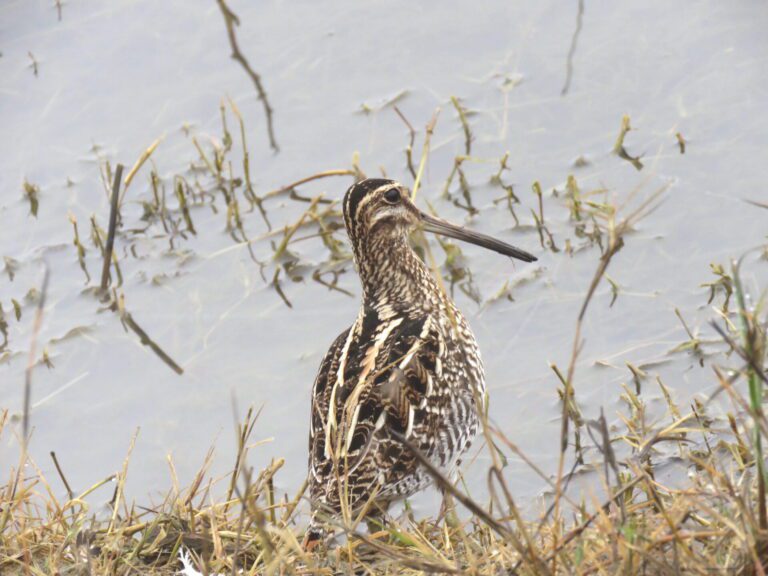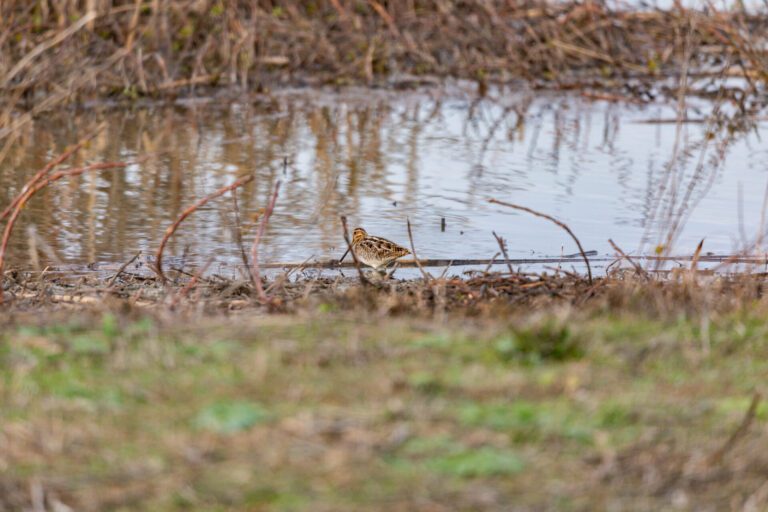Wednesday April 27, 2022

Sneaking along the sides of a marshy pond, hidden by thick low-lying vegetation, a solitary Wilson’s snipe freezes in motion as a predatory bird flies overhead. The Wilson’s snipe (Gallinago delicata) has eyes set far back on its head, allowing it to see in almost every direction. Its buffy brown coloration helps to keep it hidden and safe in the similarly colored marsh vegetation. After the would-be predator flies off without noticing the perfectly camouflaged and still snipe, the now-safe marsh bird relaxes and continues prodding the mud with its long, straight bill, collecting prey with each jab. The snipe’s bill is very sensitive and flexible, allowing it to detect, capture, and eat buried invertebrates without having to remove its bill from the soil.

These secretive birds have a wide territory range and can be seen throughout the United States. In the Pacific Northwest, some snipes stay year-round, while others travel to spend their winters in the southern half of the country all the way through Central America into Venezuela. Migrating snipes breed in the northern half of the United States and well into Canada, where there is a surplus of food to feed their new hatchlings. Unlike most shorebirds that will call a few scratches in the ground a nest, the Wilson’s snipe enhances the typical “scrape nest” by lining it with a variety of grasses and moss, creating a nest that is about 3 inches deep and 7 inches wide. When the female birds lay their two to four eggs, they will add some of the grasses from the edge of the nest before and after each egg is laid. The eggs are hidden in the marsh by their cryptic colors, which include olive green splotched with dark purple, brown, or black. The female incubates the eggs for less than a month and the chicks, once hatched, are active and ready to leave the nest on day one. However, they still need their mother to feed them. Once their young are able to fly, the parents split the responsibility of caring for them, with the male taking the two older hatchlings and the female taking the youngest two.

Although hiding is one of the snipe’s primary defenses, it is also primed to make a quick escape if a threat gets too close. Snipes are equipped with huge pectoral muscles that make up more than a quarter of their weight. These muscles allow them to reach speeds as high as 60 mph. Our technicians have witnessed this burst of speed first hand when accidentally flushing a snipe from its hiding place. A combination of camouflaged coloration and speedy, erratic flight helps this elusive bird to stay safe from the many predators of the marsh.
